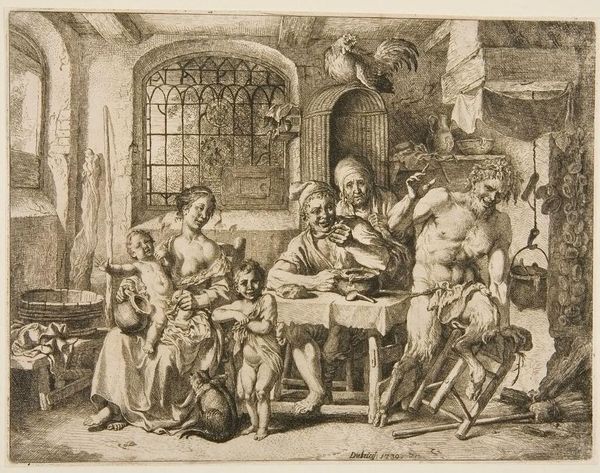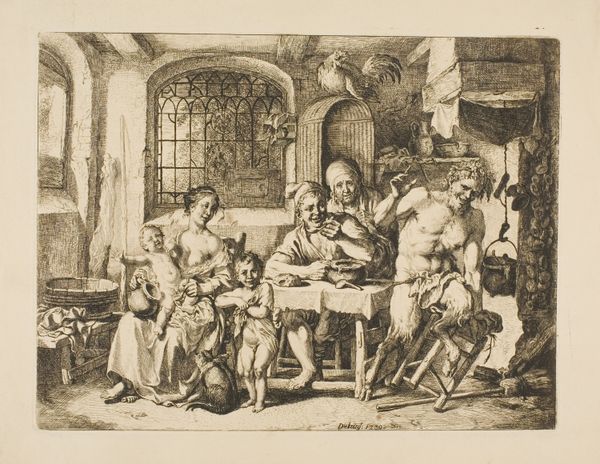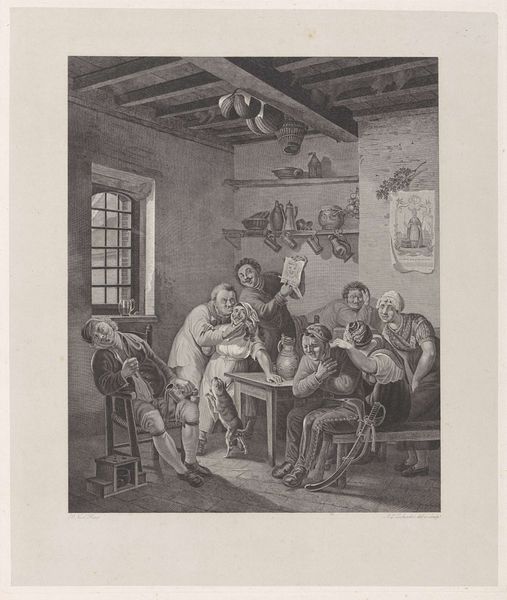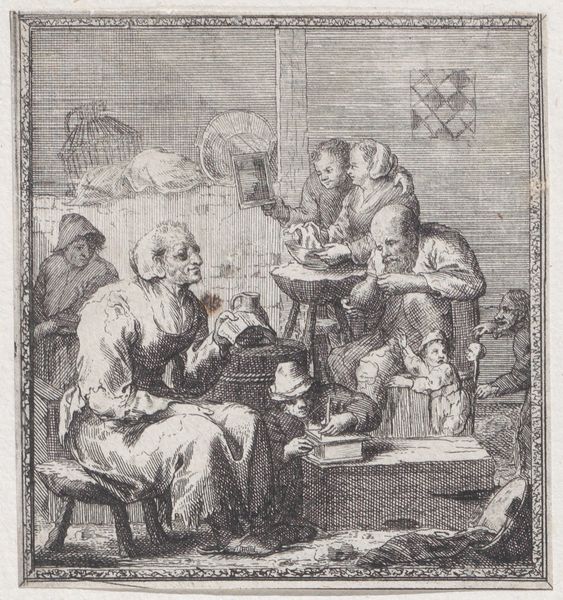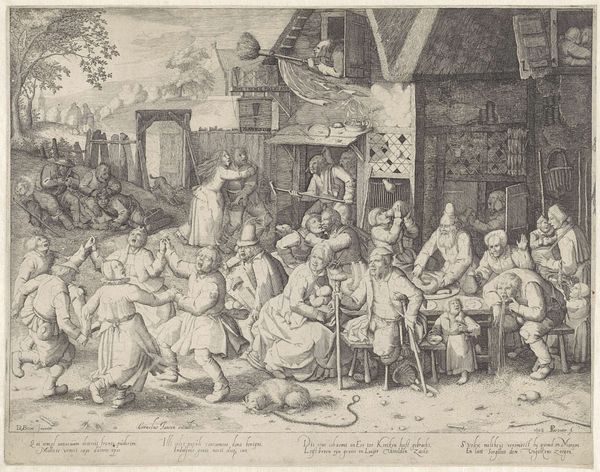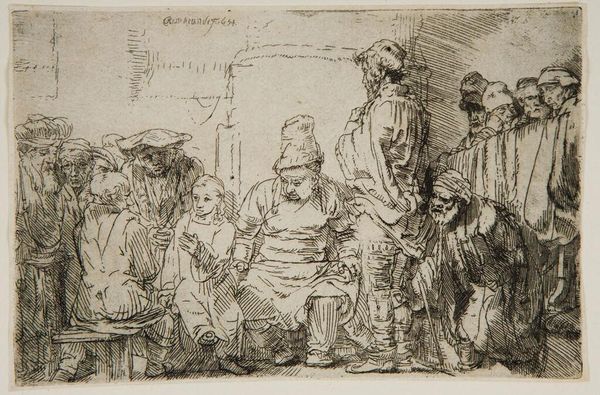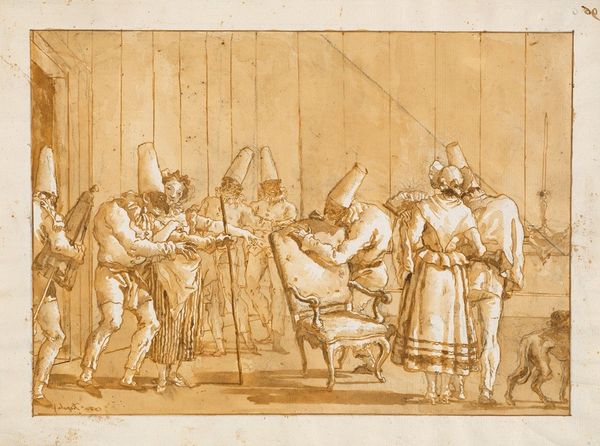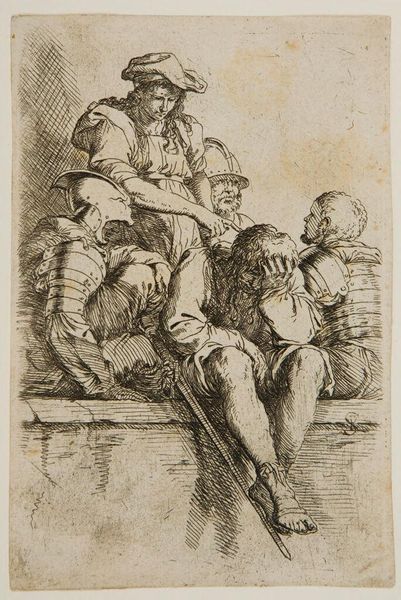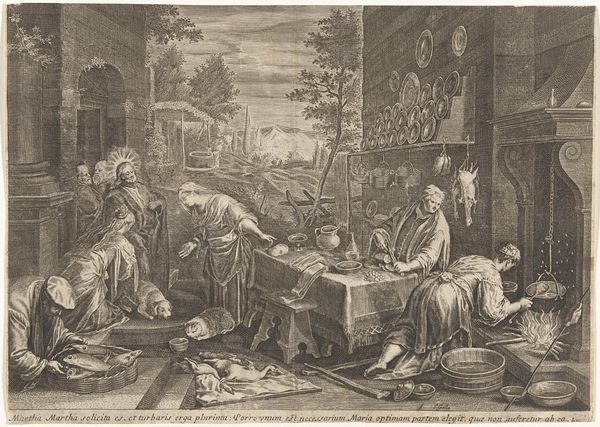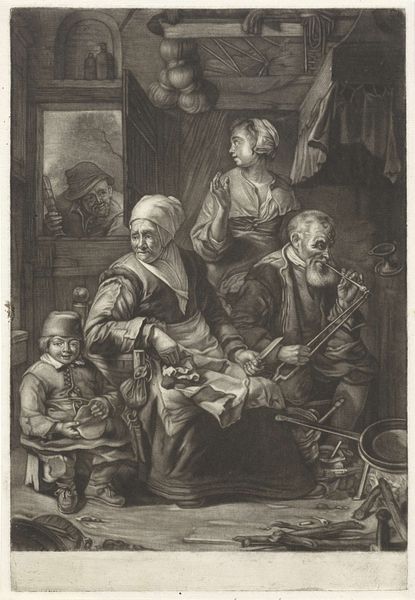
Copyright: CC0 1.0
Curator: Christian Wilhelm Ernst Dietrich's print, "Satyr and Peasants," presents a fascinating scene. It’s currently part of the collection at the Harvard Art Museums. What's your first impression? Editor: It’s a chaotic yet intimate depiction of domestic life disrupted by a mythological figure. I'm drawn to the implied tensions between the sacred and the profane. Curator: Precisely! Dietrich, who lived from 1712 to 1774, engaged with printmaking at a time when its consumption reflected complex hierarchies. The details of their labor, class, and living space speak volumes about societal structures. Editor: And the satyr’s intrusion raises questions about power dynamics, specifically how marginalized bodies might be subject to the gaze and whims of the dominant social order. Curator: I agree. By examining the materials used in its production and the modes of its distribution, we can better understand the labor, economy, and consumerism of the era. Editor: Right, and situating the work within broader narratives of social inequality allows for a more nuanced understanding of its lasting resonance. Curator: Indeed, it offers a glimpse into the material conditions that shaped not only the artwork but also the lives it depicts. Editor: Ultimately, Dietrich invites us to consider who has access to representation and on what terms.
Comments
No comments
Be the first to comment and join the conversation on the ultimate creative platform.
